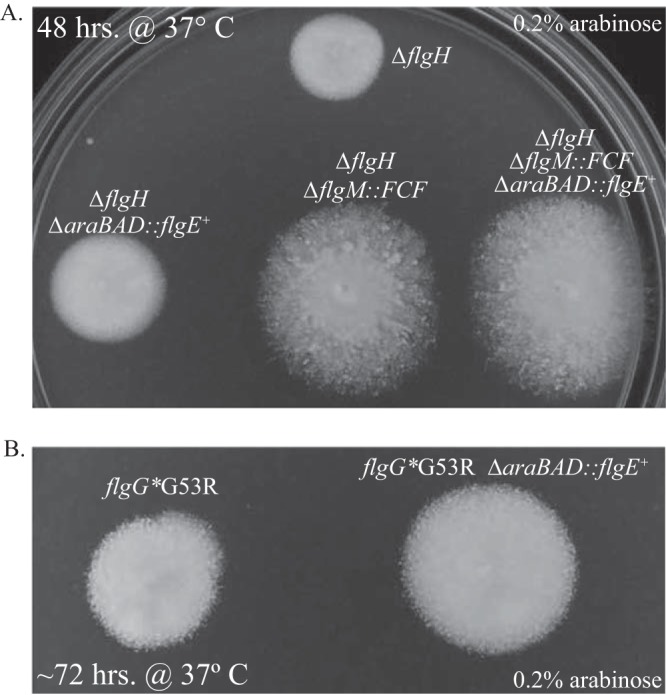FIG 4.

Nonmotile phenotype of mutants defective in PL-ring assembly can be partially suppressed by knocking out the anti-sigma factor flgM and/or overexpressing the hook protein, FlgE. Mutants that are unable to form PL-rings are largely nonmotile. The speckled phenotype of these mutants on soft agar indicates that the switch from rod to hook polymerization can occur without the PL-ring but at only a fraction of WT levels. (A) The motility defect of a mutant lacking L-rings (ΔflgH) is partially suppressed by overexpressing FlgE and/or knocking out flgM. (B) The phenotype of the flgG* G53R mutant in soft agar is similar to that of the ΔflgH mutant. By overexpressing the subunits required for PL-ring assembly, motility was restored to a large degree (Fig. 3), suggesting that this mutant is defective in PL-ring assembly. Similar to a ΔflgH mutant, the motility defect of the G53R mutant can be partially suppressed by overexpressing the hook protein, FlgE.
